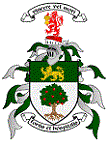D.Ilse
Posts: 330
Joined: 5/2/2009
From: Florahduh, yea that state.
Status: offline

|
Victory Was Beyond Their Grasp: With the 272nd Volks-Grenadier Division from the Huertgen Forest to the Heart of the Reich by Douglas Nash
quote:
Review
As told through the eyes of German soldiers, Nash gives the first full accounting and range of experience of a Volks-Grenadier division. In detailing the experience of one such division in the Hürtgen Forest, Nash has opened a new window into the bloody fighting at the end of World War II. He also helps to explain why it was that the western allies failed to exploit their successes of the summer and autumn of 1944 and lost their momentum amid the cold, sodden, dreary forests that ranged along the German border. The Volks-Grenadier Divisions, even at this late stage of the war, could call on skilled commanders, outstanding small-arms weaponry, and a pool of determined soldiers. --Stephen G. Fritz, author of Frontsoldaten<br /><br />This study is unique in that it focuses on a small unit, an infantry company, when most books describe warfare on the divisional level, or an even larger scale. --George Nipe, author of Decision in the Ukraine, Summer 1943, II. SS and III Panzerkorps; and Last Victory In Russia: The SS-Panzerkorps and Manstein's Kharkov Counteroffensive, February-March 1943<br /><br />Using a trove of recently discovered materials, Nash has pulled together the remarkable story of one German unit that was almost continuously engaged in a futile effort to stop the Allied advance across western Europe. Here is the war we rarely see close combat from the German side. Nash has done a great service to general readers and future historians. --Ed Ruggero, author of The First Men In: US Paratroopers; and The Fight to Save D-Day
As told through the eyes of German soldiers, Nash gives the first full accounting and range of experience of a Volks-Grenadier division. In detailing the experience of one such division in the Hürtgen Forest, Nash has opened a new window into the bloody fighting at the end of World War II. He also helps to explain why it was that the western allies failed to exploit their successes of the summer and autumn of 1944 and lost their momentum amid the cold, sodden, dreary forests that ranged along the German border. The Volks-Grenadier Divisions, even at this late stage of the war, could call on skilled commanders, outstanding small-arms weaponry, and a pool of determined soldiers. --Stephen G. Fritz, author of Frontsoldaten
quote:
In recent years, a growing community of active duty military historians has enriched the discipline through the type of scholarship gained at our nation's post graduate service schools. Names like Edward G. Miller, Mark J. Reardon, and Peter R. Mansoor, just to name a few, have contributed greatly to the World War II canon. Douglas E. Nash has certainly earned his rightful place among this distinguished group. His latest contribution, _Victory Was Beyond Their Grasp: . . . _ will predictably be stamped into the bibliographies of future works on the Huertgen Forest for decades to come.
Like archeologists digging up ancient artifacts of lost civilizations, historians sometimes happen upon lost documents that change and enrich our perspectives on an historical event. Nash, fluent in the German language, discovered one such treasure trove in the form of a company clerk's long hidden and meticulously organized "company orderly room files and documents" of Fusilier Company 272 of the 272d Volks Grenadier Division. This unit fought in the Huertgen Forest battles; the northern shoulder of the "Bulge," and eventually capitulated in the Ruhr Pocket. Utilizing these newly discovered documents as a skeletal frame, and microscopic view at the company level, Nash has sculpted a masterful work culling equally from German and Allied sources. Likewise, the view from army or corps headquarters to the lowly Grenadier defending a mud filled foxhole flows evenly and balanced.
Several popular German Order of Battle books hint at the fact that late in the war, many standard German infantry divisions were reconstructed as Volks Grenadier divisions (VGD). Nash offers a thorough comprehensive analysis on the origins and implementation of this entire process, including VGD clothing, equipment, weapons, and tactics. Several books tell the story of the bitter Huertgen Forest battles during the fall and winter of 1944/45, its causes, effects, and the German units the American forces faced during that deadly campaign. Nash, in an engaging writing style that never bogs down, places the reader within the ranks of the 272 VGD as it arrived by rail and deployed in the forest, always short of heavy weapons support. Of particular interest to this reviewer was the raids conducted by my father's unit, the 13th Infantry Regiment of the 8th Infantry Division against the 272 VGD near Vossenack. Scores of books tell of the US 2d Ranger Battalion's heroic scaling of the cliffs at Pointe du Hoc on D-Day, but few tell of its worst day in combat: a futile frontal assault up Hill 400 (Castle Hill) at Bergstein, Germany. Nash shows us how on December 6, 1944, elements of the 272 VGD made the Rangers pay dearly for this chunk of German real estate. Several Huertgen Forest accounts mentions the green US 78th Infantry Division's unkind baptism of fire in the Huertgen during January 1945. In a battle narrative that constitutes one of the high points of the book, Nash recounts the head-on collision between the 272 VGD and the 78th Division at the village of Kesternich.
The Aberjona Press, with several books emphasizing the German perspective of World War II to their credit, has put together a nice package here. Easy to read battle maps accompany every action mentioned in the book. It would have been nice to have a map placed where that particular action was taking place, rather than all grouped together at the front of the book, but this method is not too distracting. Dozens of photographs, most never before seen reproduced a bit dark, but again, not a big annoyance. Though well deserving of a hard cover edition, this paperback is well bound and made of heavy gauge paper that should withstand years of turning. Copious notes and numerous appendices containing: Order of battle, organizational charts, equipment, and tables of organization (ET&O), casualty and replacements tables round out this monumental project.
Nash's book is arguably the best view of the other side of the hill to emerge in years. For students of the Huertgen Forest Campaign, and the last battles of the Third Reich in the west, this book is a must read.
_____________________________

|
 Printable Version
Printable Version



















 New Messages
New Messages No New Messages
No New Messages Hot Topic w/ New Messages
Hot Topic w/ New Messages Hot Topic w/o New Messages
Hot Topic w/o New Messages Locked w/ New Messages
Locked w/ New Messages Locked w/o New Messages
Locked w/o New Messages Post New Thread
Post New Thread